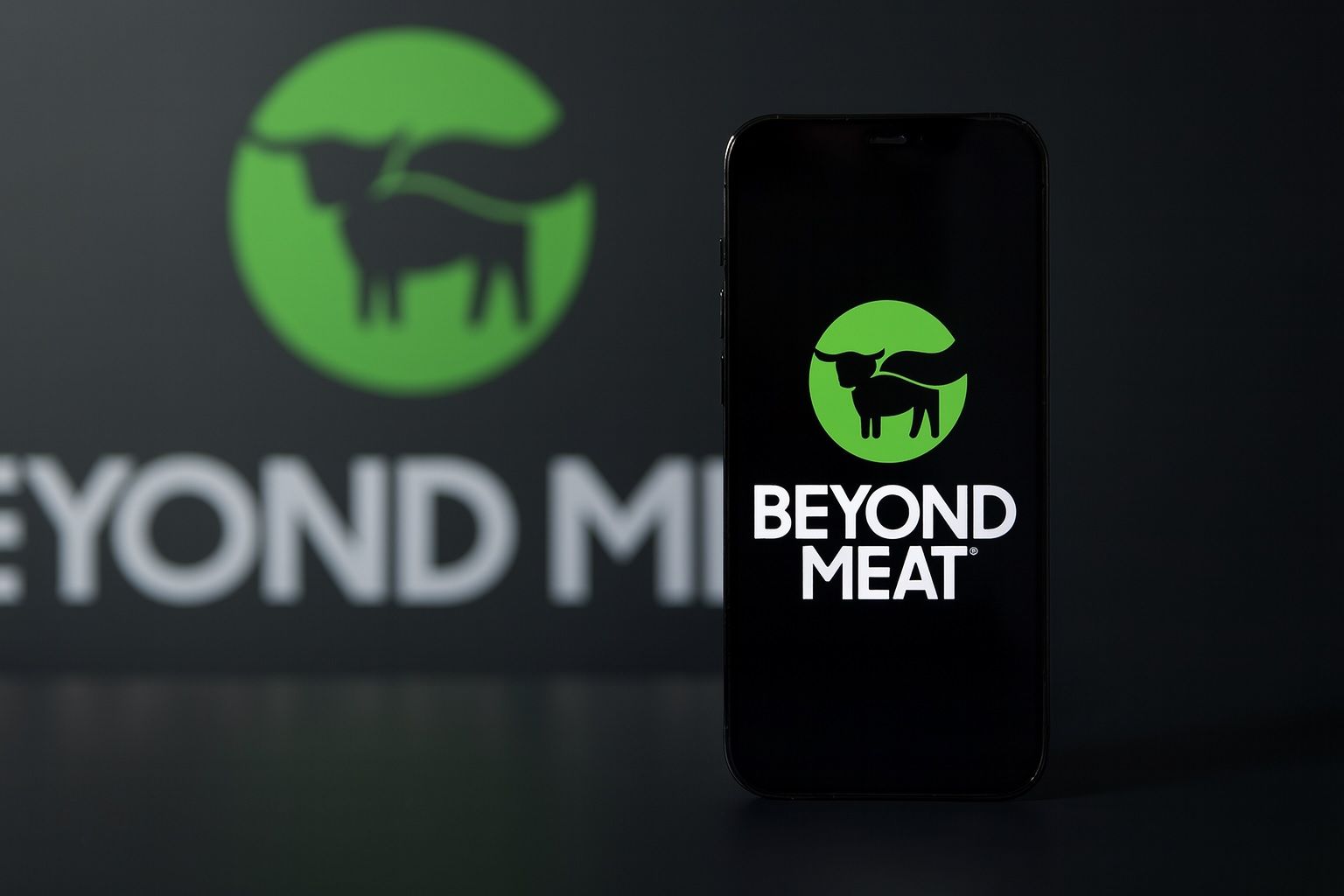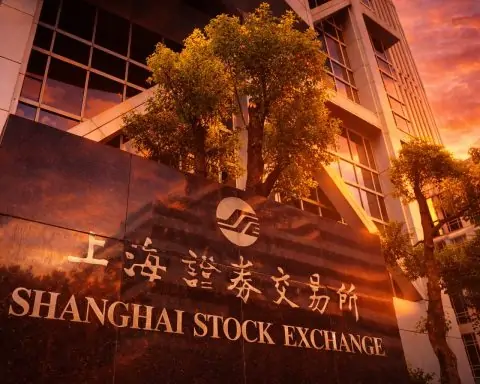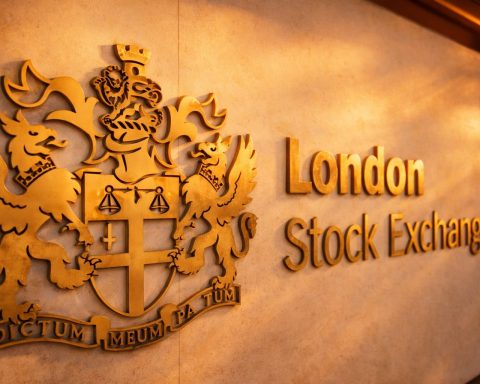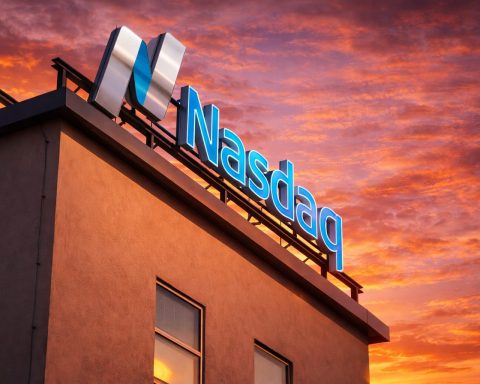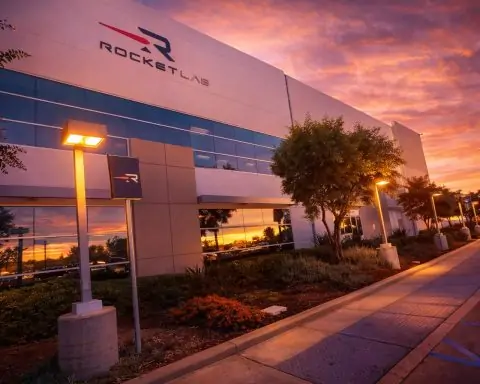- Stock Pop: BYND shares spiked roughly 400% in two trading days (Oct. 20–21, 2025) on a sudden retail-driven rally [1]. As of the Oct. 21 close, the stock hit about $3.62 (from roughly $0.52 on Oct. 16) [2] [3].
- Walmart Deal: Beyond Meat announced an expanded Walmart partnership on Oct. 21 – adding a new “Beyond Burger 6-Pack”, Chicken Pieces and Korean BBQ-Style steak to 2,000+ Walmart stores [4] [5]. CEO Ethan Brown said this move “provides more consumers with access to Beyond’s clean and nutritious plant protein products” at a lower price point [6].
- Debt Restructuring: In mid-October, BYND completed a debt-for-equity swap, issuing about 316 million new shares to retire roughly $800M in bonds [7] [8]. This “huge dilution bomb” nearly quadrupled the float, helping the company avoid default but devastating existing shareholders [9].
- Weak Fundamentals: The company’s financials are under pressure. Q2 2025 revenues were only $75.0M (–19.6% YoY) and it lost $33.2M [10] [11]. Sales have plunged from $465M in 2021 to $326M in 2024 [12]. Cost cuts (including a 6% workforce reduction) and transformation plans are underway [13], but Wall Street notes plant-based meat demand is shrinking.
- Analyst Views: Wall Street remains bearish. Five of eight analysts rate BYND a “sell,” with a median 12‑month target around ~$2.30 [14] [15]. TD Cowen’s analysts warned of an “existential threat” without a turnaround [16]. TipRanks shows a consensus “Moderate Sell” with average target ~$2.20 [17] – far below current levels.
- Meme-Stock Mania: The run-up is seen as a classic short squeeze. BYND had ~50–60% of its float shorted [18]. Reddit and stock‑chat buzz (BYND was flagged as a “meme stock”) pushed the price up violently on huge volumes [19] [20]. However, technical analysts warn the rally is speculative: BYND remains well below its long-term moving averages [21] and could reverse sharply.
- Product & Strategy Pivot: Beyond Meat is rebranding to emphasize nutrition. CEO Ethan Brown plans to drop “Meat” from the brand and focus on new plant proteins [22]. In mid-2025 the company launched “Beyond Ground” – a 4-ingredient, high-protein product (27g protein per serving) that isn’t designed to mimic beef [23]. The company has also secured new debt financing (up to $100M in May 2025) from a backer of clean proteins (Ahimsa/Unprocessed Foods) to strengthen its balance sheet [24].
- Legal/Other: BYND agreed to pay about $7.5M to settle a class‑action suit over alleged false advertising (protein content claims) [25]. Founder Ethan Brown stepped down from the Board (he remains CEO) as part of a governance shake-up [26].
Stock Surge Amid Retail Frenzy
On Oct. 20–21, 2025 Beyond Meat’s stock exploded in a “meme-stock” trading frenzy. The share price rocketed about 128% on Oct. 20 and over 80% more on Oct. 21 [27]. By Oct. 21’s intraday high, BYND traded near $3.00, up from ~$0.50 just days earlier [28]. Trading volumes surged into the billions of shares, dwarfing BYND’s historical norms [29] [30]. This spike coincided with heavy social‑media chatter, new speculative funds listing BYND, and news of institutional attention (e.g. a Bank of America note flagging BYND as a stock to watch).
Importantly, no new fundamental catalyst drove this rally. Bloomberg and Reuters note there were no fresh SEC filings or official announcements explaining the jump – rather, it was likely a classic short squeeze by retail investors [31] [32]. As one analyst put it, the move was “about flow and attention, not a sudden turnaround in the business” [33]. Indeed, the stock is still down ~43% year-to-date despite the surge [34]. By Oct. 22 pre-market it was at ~$5.50, but most professionals warn that such “meme” rallies often reverse quickly. “Big squeezes can also reverse in seconds,” one trading alert cautioned [35].
Walmart Partnership and Product Strategy
Beyond Meat’s major news on Oct. 21 was the expanded Walmart rollout. The company will introduce a new Beyond Burger 6-Pack (a value-pack four-oz patties bundle) along with its plant-based chicken pieces and a Korean BBQ-style steak product in 2,000+ Walmart U.S. stores [36] [37]. Walmart’s national distribution is a big gain: previously only about 1,500 Walmarts carried limited Beyond products. CEO Ethan Brown emphasized that the cheaper value-pack addresses inflation concerns. “At a time when many households face rising food prices, the value pack offers the same great-tasting burger at a lower price point,” he said [38] [39]. Analysts believe wider Walmart exposure could modestly boost volume, but many caution that it may take time to materialize amid weak category demand.
Beyond Meat is also pivoting its strategy. In July 2025 Brown unveiled a company rebrand (dropping the word “Meat” from the name) and launched “Beyond Ground,” a new plant-protein product that uses just four ingredients and delivers 27g of protein per serving [40]. Unlike traditional faux burgers, Beyond Ground is not trying to imitate beef: it’s meant as a nutrient-dense base for cooking. This shift to “cleaner” formulations underscores management’s focus on nutrition and simplicity. Brown hinted at more innovations (e.g. plant-protein snacks or grillables) and said Beyond would emphasize nutrient density across its lines [41] [42].
Financial Results & Balance Sheet
Recent financial results have been disappointing. In Q2 (June 2025) Beyond Meat’s net revenues plunged to $75.0M, a 19.6% year-over-year drop [43]. All channels were weak – retail sales fell sharply – and analysts had expected ~$83.8M [44] [45]. The gross margin shrank to ~11.5% (from 14.7%), and the company lost $33.2M for the quarter (–$0.43 per share) [46] [47]. Management blamed “ongoing softness in the plant-based meat category” and has withdrawn prior sales guidance. In May, Beyond Meat backed off its full-year forecast, citing “an elevated level of uncertainty” [48].
Beyond has cut costs to improve cash flow. In Q2 it reduced staff by roughly 6% and enlisted turnaround consultants (hiring an interim “Transformation Officer” from AlixPartners) [49] [50]. It also suspended operations in China and settled disputes (incurring one-time charges). On the balance sheet, cash is very tight: as of Q2-end it held only ~$117M in liquidity against over $1.1B of debt [51]. To avoid a liquidity crisis, the board agreed in October to swap nearly $1.15B of convertible notes into new secured notes plus equity. Almost all noteholders (97%) tendered, so BYND will issue ~316M new shares and $208M of new debt [52] [53]. Net debt will fall by ~80% when the deal closes, but existing shareholders are left deeply diluted. “It’s a huge dilution bomb,” one analyst warned, noting that current owners now have a “much smaller slice of the company’s future profits” [54].
Analyst and Expert Commentary
Wall Street analysts are uniformly skeptical. Most maintain sell/hold ratings and very low price targets. As of mid-Oct 2025, consensus ratings were “Moderate Sell” with an average 12-month target near $2.20–$2.40 [55] [56]. TD Cowen’s food analysts recently cut their target to just $0.80 (a Sell rating), explicitly citing the massive dilution and “fragile” outlook [57] [58]. In an August note they warned Beyond Meat faces an “existential threat” without significant change [59].
Even analysts covering the industry note secular headwinds. eMarketer’s Rachel Wolff says consumer skepticism of processed foods is hurting demand: “Consumers’ growing concerns about processed foods are severely diminishing the appeal of Beyond Meat’s product line, causing retailers and quick-service restaurants to pull back sharply on orders” [60]. Wolff’s data shows U.S. retail sales of refrigerated plant-based meat were down ~17% YTD in 2025. In short, several experts say the category has stalled. As TS2 Techstock observed, “Americans still overwhelmingly prefer the real thing,” and incumbents like Tyson Foods and Nestlé have their own plant-based offerings [61].
Despite the recent stock spike, most analysts warn that fundamentals remain weak. The average price target (~$2.3) is far below even the Oct. 20 price, implying that the run-up may not last [62] [63]. “This rally is about a short squeeze, not a sudden turnaround in the business,” said one trading note [64]. Technical forecasters point out BYND’s slide well below its 50- and 200-day moving averages, signaling a still bearish trend [65]. Short-term indicators (RSI, etc.) are oversold, so a bounce is possible – but professional traders caution that resistance lies near ~$4 and support nearer ~$0.45. If the hype dies, BYND could sink back under $1 very quickly (as it did in mid-Oct).
Competitive Landscape
Beyond Meat operates in a crowded alternative-protein market. Its closest rival on shelves is Impossible Foods (private, ~$7 billion valuation) [66]. Impossible remains a market leader with tie-ins at Burger King (Impossible Whopper) and Starbucks, but it has also faced slowing growth recently. Traditional meat giants are also competing: Tyson Foods (NYSE: TSN) now offers its own plant-based lines and has a market cap near $18–19 billion [67] (about 30× larger than Beyond Meat at current levels). Tyson’s stock trades around $52 and has fallen ~8–9% in the past year [68], far outperforming BYND over that period.
In Canada, Maple Leaf Foods (TSX: MFI) owns brands like Field Roast and Lightlife. It is smaller than Tyson (market cap ~$2.5 billion [69]) but has been profitable and is up ~29% in the past year [70]. Maple Leaf’s stock trades near C$28 (about $20 US) [71]. Other public peers include Oatly (OTLY), a plant-based dairy leader, though its market cap is only ~$0.44 billion [72] and its product focus is different.
Overall, Beyond Meat has led the alt-meat segment, but the space has grown more competitive. Major food companies (Nestlé, Kellogg, Conagra, etc.) have launched plant proteins, and many QSR chains offer proprietary meatless items. With category growth slowing, Beyond Meat’s premium niche is under pressure. In table form, here is how Beyond Meat compares to a few peers on price and valuation:
| Company | Ticker | Price (USD) | Market Cap (USD) | 1Y Change |
|---|---|---|---|---|
| Beyond Meat | NASDAQ: BYND | ~$3.6 [73] | ~$1.5B [74] (post-rally) | –>185% (up days, but –43% YTD) |
| Tyson Foods | NYSE: TSN | ~$52.35 [75] | ~$18.6B [76] | –8.5% [77] |
| Maple Leaf | TSX: MFI (CAD) | C$28.99 (~$21) [78] | ~$2.5B [79] | +28.99% [80] |
| Oatly Group | NASDAQ: OTLY | ~$15.91 [81] | ~$0.44B [82] | – (down from peak) |
| Impossible Foods | (private) | – | ~$7.0B (est.) [83] | – |
(Price and cap as of Oct. 22, 2025. 1Y change for TSN/MFI from CompaniesMarketCap data.)
Sources: Latest stock quotes and company filings [84] [85] [86] [87] [88].
Outlook and Forecasts
With this week’s wild swings, the short-term outlook is extremely uncertain. Most analysts expect BYND to fall back from these levels once the squeeze settles. The consensus target around $2.3 suggests only modest upside (or significant downside) from today’s price [89] [90]. In fact, at $3–4, the stock trades well above the average forecast.
Longer-term, investor sentiment is tied to whether Beyond Meat can stem losses, win over skeptical consumers, and gain meaningful retail traction. The new Walmart deal and product pivot could help stabilize sales, but they must overcome weak demand. As Bloomberg Intelligence noted recently, Beyond Meat may struggle to become “consistently profitable” without a broader recovery in the plant-based category [91].
For now, the extreme volatility has put Beyond Meat in the news spotlight, but caution prevails. Even as retail traders cheer the rally, market pros and analysts warn that “this meme-fueled bounce” does not change the company’s underlying struggles [92] [93]. Investors looking at BYND should weigh the hefty dilution, competitive pressures, and still-challenged financials – factors likely to keep the stock in roller-coaster territory.
References: Authoritative reports from Reuters, Bloomberg, TS2.Tech analyses, and regulatory filings [94] [95] [96] [97] [98] [99] [100] provide the data and commentary above. These include the latest media interviews, earnings releases, and market forecasts.
References
1. ts2.tech, 2. ts2.tech, 3. stockanalysis.com, 4. ts2.tech, 5. www.reuters.com, 6. ts2.tech, 7. ts2.tech, 8. www.reuters.com, 9. ts2.tech, 10. www.sec.gov, 11. www.sec.gov, 12. ts2.tech, 13. www.sec.gov, 14. ts2.tech, 15. www.tipranks.com, 16. www.reuters.com, 17. www.tipranks.com, 18. ts2.tech, 19. ts2.tech, 20. www.tipranks.com, 21. ts2.tech, 22. plantbasednews.org, 23. plantbasednews.org, 24. plantbasednews.org, 25. ts2.tech, 26. ts2.tech, 27. ts2.tech, 28. ts2.tech, 29. ts2.tech, 30. www.tipranks.com, 31. www.tipranks.com, 32. www.tipranks.com, 33. ts2.tech, 34. www.investing.com, 35. ts2.tech, 36. ts2.tech, 37. www.reuters.com, 38. www.investing.com, 39. ts2.tech, 40. plantbasednews.org, 41. plantbasednews.org, 42. www.fastcompany.com, 43. www.sec.gov, 44. investors.beyondmeat.com, 45. www.sec.gov, 46. www.sec.gov, 47. www.sec.gov, 48. www.reuters.com, 49. www.sec.gov, 50. www.sec.gov, 51. www.reuters.com, 52. www.reuters.com, 53. ts2.tech, 54. ts2.tech, 55. ts2.tech, 56. www.tipranks.com, 57. www.reuters.com, 58. ts2.tech, 59. www.reuters.com, 60. www.reuters.com, 61. ts2.tech, 62. ts2.tech, 63. www.tipranks.com, 64. ts2.tech, 65. ts2.tech, 66. tsginvest.com, 67. companiesmarketcap.com, 68. companiesmarketcap.com, 69. companiesmarketcap.com, 70. companiesmarketcap.com, 71. companiesmarketcap.com, 72. www.reuters.com, 73. stockanalysis.com, 74. www.reuters.com, 75. companiesmarketcap.com, 76. companiesmarketcap.com, 77. companiesmarketcap.com, 78. companiesmarketcap.com, 79. companiesmarketcap.com, 80. companiesmarketcap.com, 81. www.reuters.com, 82. www.reuters.com, 83. tsginvest.com, 84. stockanalysis.com, 85. www.reuters.com, 86. companiesmarketcap.com, 87. companiesmarketcap.com, 88. www.reuters.com, 89. www.tipranks.com, 90. ts2.tech, 91. www.bloomberg.com, 92. ts2.tech, 93. www.reuters.com, 94. www.reuters.com, 95. www.reuters.com, 96. www.sec.gov, 97. www.reuters.com, 98. ts2.tech, 99. plantbasednews.org, 100. www.tipranks.com
